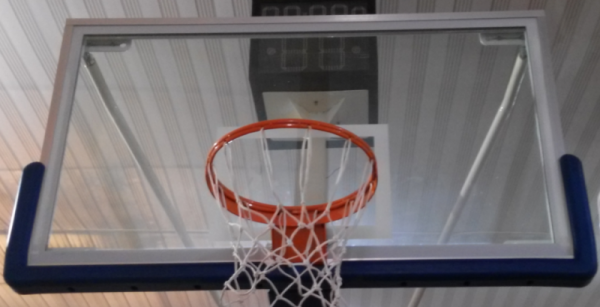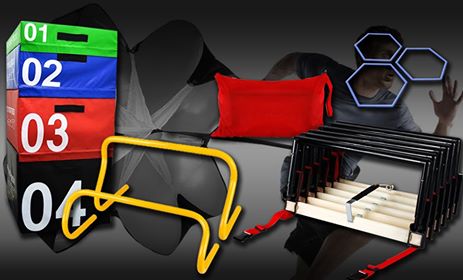
available in Basketball Court Equipment Category
Acrylic is soft and tempered glass is hard

Acrylic is a very soft material. Over time, it will accumulate little scratches in the from scuff marks. This can give the board a dull or dirty look that can not be washed away. Also, lower quality acrylic backboards can attract mildew that will make the backboard look yellow and dingy. Tempered glass, like your car windshield, is very hard and will resist scratching. The backboard will remain clear for the life of the basketball system. Also, because tempered glass is more rigid, you will not see drum-head effect that deadens the rebound on acrylic backboards.
Acrylic is light and tempered glass is heavy
Tempered glass weighs approximately 4-6 times as much as acrylic. This gives the entire system more mass making it less susceptible to movement. Imagine throwing a rock at cinder block and then throwing that same rock at a piece of wood. Which would move more?
How to spot a high-quality backboard

Tempered Glass: One of the most important factors is the backboard thickness. Most are 3/8 inch thick although some manufacturers offer full ½ inch thick backboards which is the same used at competitive levels (NCAA, NBA, etc.). For the best performance, this is the way to go as it adds to the backboards mass and rigidity.
Acrylic: The kind of casting and thickness are two of the most important factors when choosing an acrylic backboard. The best use ½ thick cell cast which performs much better than 3/8 inch alternatives. Another important factor is the backboard frame. Acrylic backboards must be framed completely around the perimeter of the board  with a steel or aluminum structure. Backboards that do not have this rigid structure have very poor playing characteristics. The heavier and more rigid the frame, the better the performance will be.
with a steel or aluminum structure. Backboards that do not have this rigid structure have very poor playing characteristics. The heavier and more rigid the frame, the better the performance will be.
Rebound Response Experiement
We tested different three of the most popular backboard types to determine rebounding characteristics of different backboard thicknesses and materials.
We tested three of the most popular backboard types to determine rebounding characteristics of different backboard thicknesses and materials.
Summary – Acrylic was the clear looser with only a 38% rebound response (some manufactures use thinner 3/8 acrylic which was not tested). 1/2 inch glass was the winner beating 3/8 inch glass by approximately 9% with a 69% rebound response.
Experiment Parameters – The backboards are all 60 x 36 inches and have identical aluminum framing. The ball used is made of an indoor outdoor synthetic material. All balls were dropped from a consistent 55 inches and were measured with a high speed digital camera. Rebound response is defined here as the percentage of distance the ball bounced back from the original drop height.
credits to : produnkhoops





































